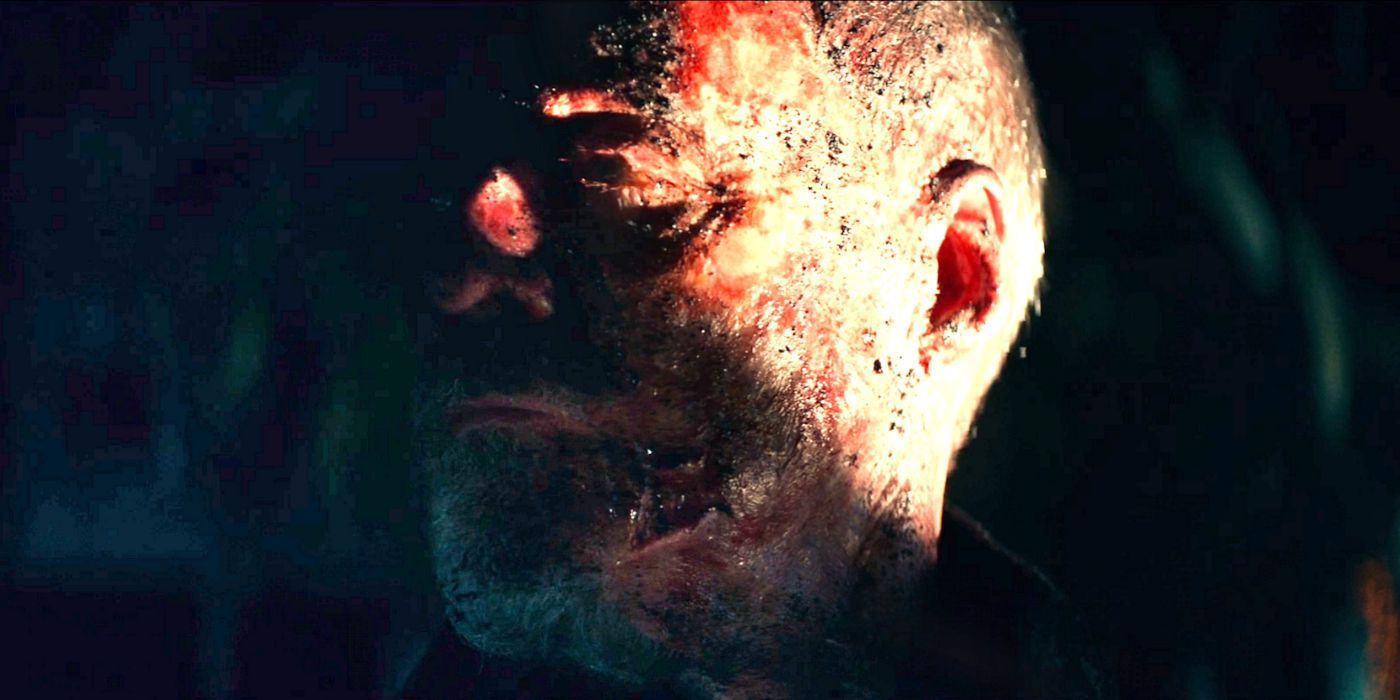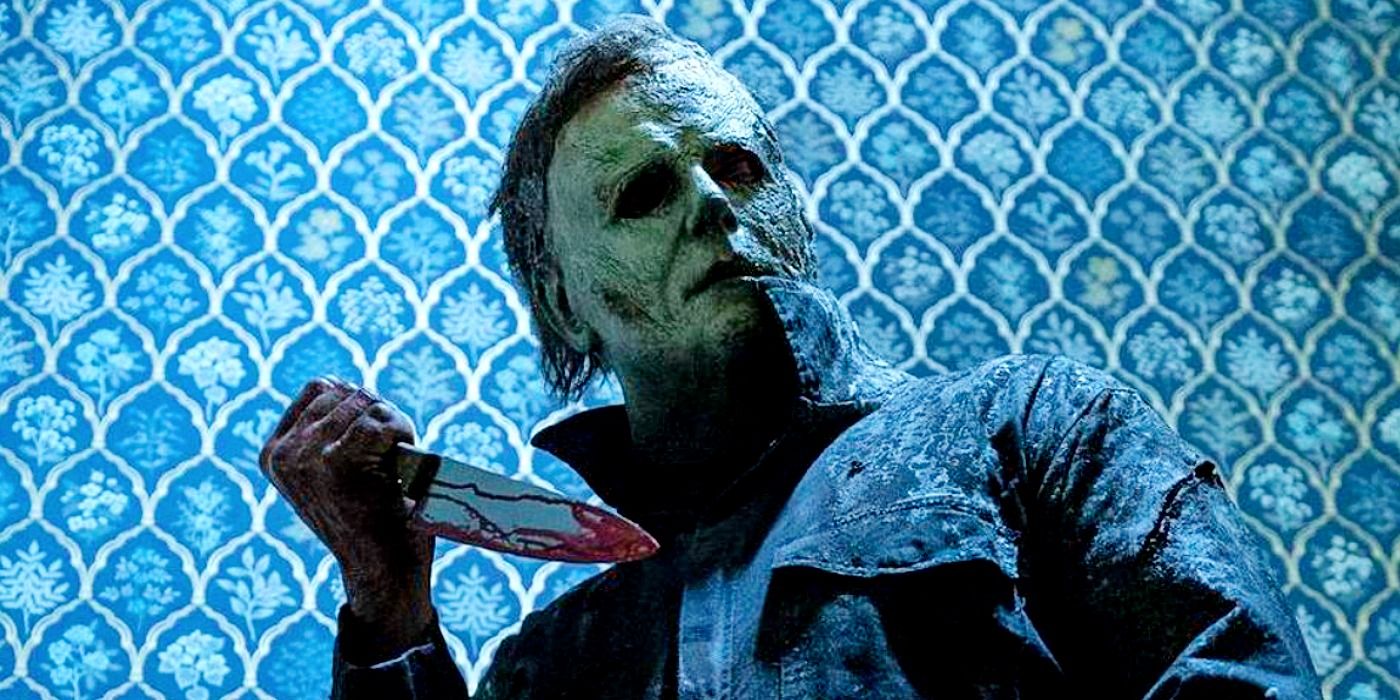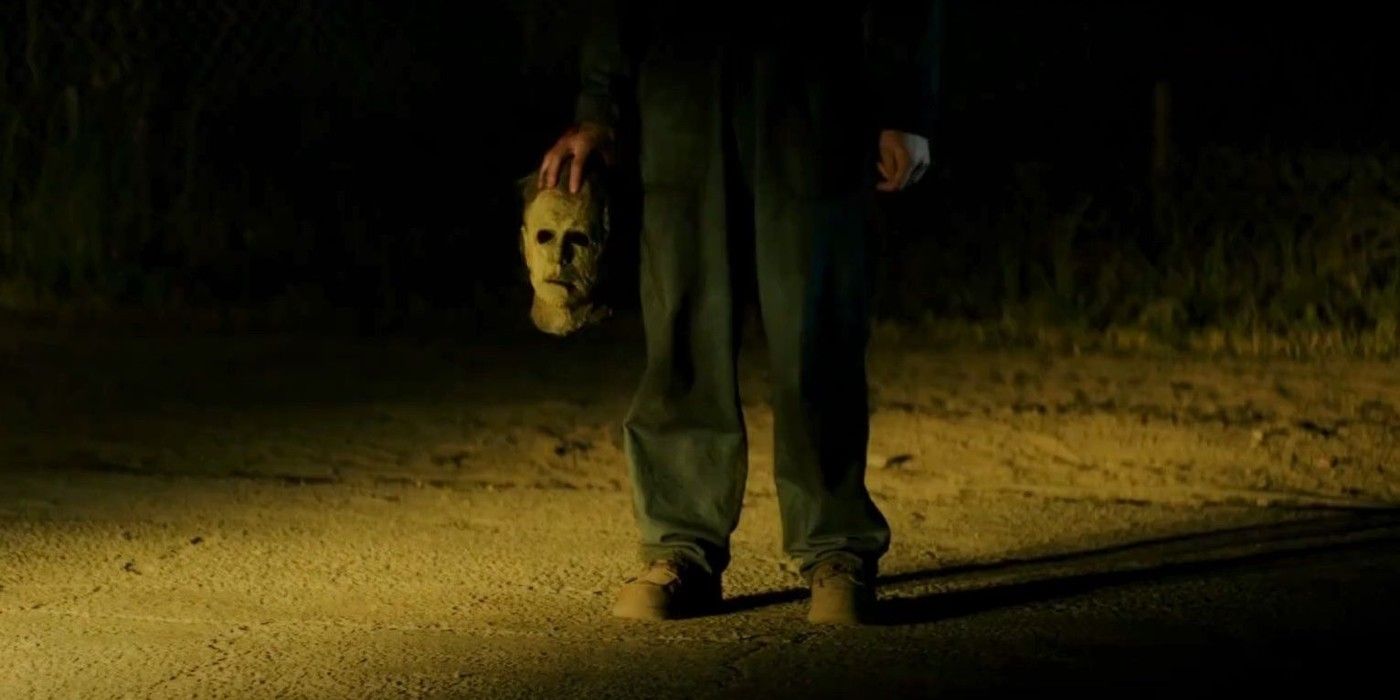Summary
- Halloween Kills reveals Michael Myers' face, showing how far the character has evolved in this classic franchise.
- Karen Nelson, Laurie Strode's daughter, unmasked Michael Myers to protect her daughter, Allyson, in a dark and out-of-focus scene.
- While Halloween Ends briefly shows Michael Myers' face with severe scarring and burns, not fully revealing it keeps the spirit of "The Shape" alive.
Halloween Kills sees Michael Myers unmasked for the first time in years — and it's one of the clearest reveals of Michael Myers' face so far. A sequel to 2018's Halloween and followed up by Halloween Ends, Halloween Kills is part of a revival of the franchise and a sequel to John Carpenter's original Halloween movie from 1978. The 2018 Halloween brought back original final girl Laurie Strode (Jamie Lee Curtis), and the latest trilogy focused on Michael once again going on a murderous spree through Haddonfield. Though his mask is one of the most iconic images in horror movie history, even decades after the original movie, Michael Myers' face has rarely been seen.
In Halloween Kills, Laurie Strode talks about wanting to see Michael Myers' face, so she can see the life drain from his eyes. Unmasking Michael Myers is always a significant event. Michael's mask was removed in the climax of the original movie, confirming he is just a man underneath. However, the mask is as symbolic as the character himself, a representation of a faceless, perpetual threat. David Gordon Green chose to unmask the slasher villain in an astounding moment towards the end of Halloween Kills, showing how far the character has gone in this classic franchise.
What Michael Myers Face Looks Like In Halloween Kills
Instead of Laurie Strode revealing Michael Myers's face in Halloween Kills, the act was performed by her daughter, Karen Nelson, towards the end of the film. She did so to protect her own daughter, Allyson, from being killed by Michael. Karen unmasked Michael Myers and lured him into a trap where several other people from Haddonfield were waiting for him. Curiously, while there's a wide shot in which Michael Myers' face can be seen in full, it's out of focus, and the close-up that happens moments later is incredibly dark.
Technically, Michael Myers was unmasked throughout the beginning of Halloween (2018), but the front of his face was never shown. In Halloween Kills, Michael's face is seen partially from the front but mostly from a side profile. It was a smart decision to peel back the veil by removing his mask and showing just enough to satisfy fans, yet leaving more to the imagination since it's nearly impossible to discern who Michael is in the movie. He is able to keep the mysterious element that is so essential to his character.
When Else Has Michael Myers Been Unmasked?
Contrary to popular belief, Michael Myers' face has been revealed before Halloween Kills. The slasher villain has been unmasked a couple of times before, and he looks mildly different each time. The first time audiences caught a glimpse of Michael Myers unmasked was none other than John Carpenter's original Halloween. The first mask the killer dons in the movie is a clown mask, which police take off after he's led from the house post murdering his sister in 1963.
During the climax of the movie, during Laurie's final confrontation with the masked killer, she stabs Michael in the chest with his own knife and in the eye with a coat hanger. Laurie is then able to pull his mask off, which he takes back and quickly puts back on — though not before audiences get a glimpse of his face. Coincidentally, the unmasked Michael Myers is played by Tony Moran, whereas in the rest of the film, he's played by Nick Castle.
Halloween 5: The Revenge of Michael Myers also saw the eponymous killer unmasked. After chasing his niece Jamie through the house, she calls him "uncle," which prompts him to remove his mask. Don Shanks played the killer this time around, and though his face is mostly in shadow, the eye Laurie injured in the first movie is visibly scarred.
Rob Zombie's Halloween doesn't see an adult Michael Myers unmasked, but it does spend a great deal of time focusing on the killer's childhood before he puts on the iconic visage. However, Rob Zombie's Halloween II does feature an adult Michael Myers unmasked. The first installment to the new trilogy, Halloween, shows unmasked Myers from the back while he's detained. That being said, Halloween Kills gives the best look at Michael Myers without his iconic mask.
What Michael Myers Looked Like In Halloween Ends
Halloween Ends saw the final showdown between Laurie and Michael, though shockingly, Michael wasn't responsible for most of the murders in the movie. Michael is assuredly dead in Halloween Ends' finale, getting shoved into a crushing machine at a scrapyard. While Michael Myers unmasked is shown in greater detail in Halloween Kills, there are fleeting glimpses of Michael Myers' face in Halloween Ends.
Laurie and Allyson are able to take Myers' mask off. However, the final installment subverted many expectations, and getting to see the killer's face for only a nanosecond was one of them. Behind-the-scenes photos show much more, with the character's face having severe scarring and burns. The grotesque look at his face is a reminder of the relentless nature of the character and everything he had survived in order to continue his killing spree.
With Halloween Ends being willing to definitively kill off Michael Myers, it is surprising they didn't choose to show his face properly in the end. It would have seemed fitting with the end of the movie addressing the closure the people of Haddonfield get from seeing Michael finally die. Seeing his face would have driven home the idea that he was just a man and he could no longer haunt them. However, refusing to show his face keeps the spirit of Michael as "The Shape" alive even if he is dead. He is able to remain that terrifying icon of horror in the minds of the audience.




